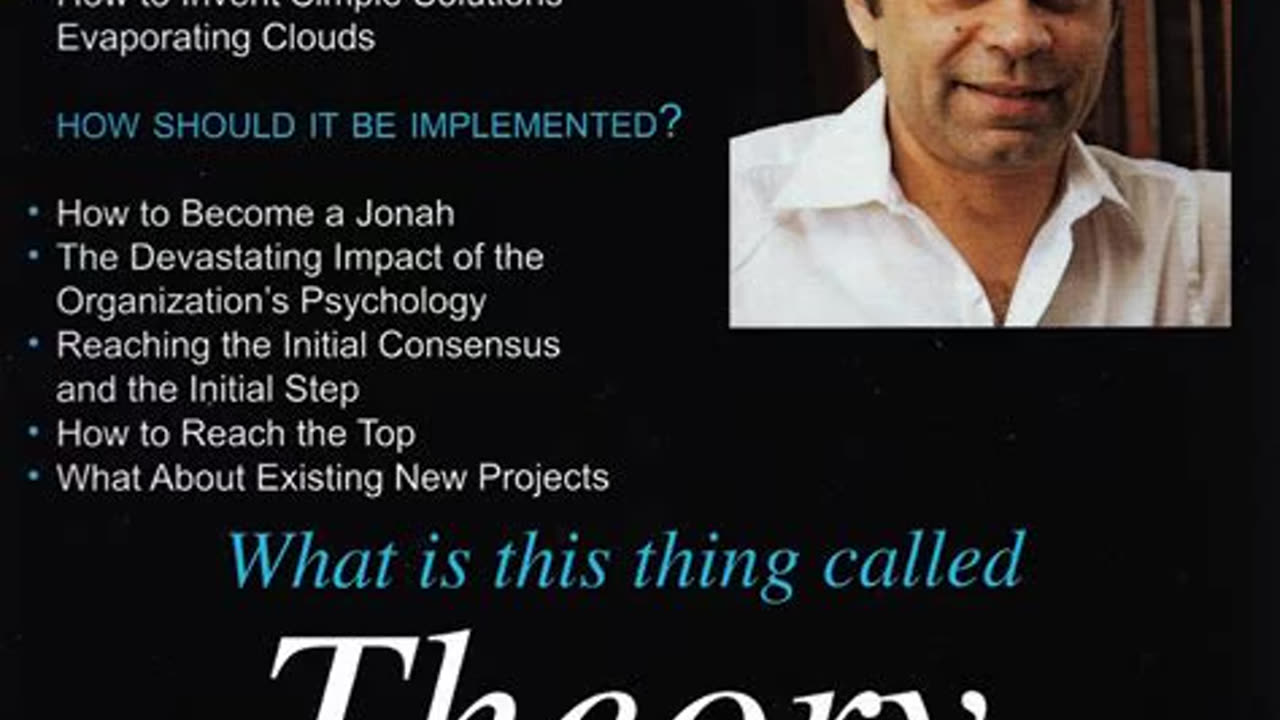Premium Only Content

The Theory of Constraints by Eliyahu Goldratt | Summary
Buy Here: https://amzn.to/4h5Ig10
"""The Theory of Constraints"" by Eliyahu Goldratt is a management philosophy and methodology that focuses on identifying and managing the constraints or bottlenecks that limit the overall performance of an organization. Goldratt presents the theory as a systematic approach to improve processes and achieve higher levels of productivity and efficiency.
Key concepts and principles covered in the book include:
1. The Goal: The book centers around the concept of ""the goal,"" which refers to the objective or purpose of an organization. Goldratt argues that the primary goal of any business is to make money both now and in the future.
2. Constraints and Bottlenecks: Goldratt emphasizes the significance of identifying and addressing constraints within a system. Constraints are the factors that limit the output or effectiveness of a process, and bottlenecks are the specific constraints that have the most significant impact on overall performance.
3. Five Focusing Steps: The book presents a systematic approach to improving the performance of a system, known as the ""five focusing steps."" These steps involve identifying the system's constraint, exploiting the constraint to maximize its output, subordinating all other processes to the constraint, elevating the constraint if needed, and then repeating the process with the newly identified constraint.
4. Throughput, Inventory, and Operating Expense: Goldratt introduces the concept of ""Throughput,"" which represents the rate at which a system generates money through sales. He contrasts Throughput with Inventory, which refers to the money invested in materials and resources, and Operating Expense, which represents the money spent to turn Inventory into Throughput.
5. Drum-Buffer-Rope: The book introduces the Drum-Buffer-Rope concept, which is a scheduling technique used to manage the flow of work through a system. The Drum represents the constraint, the Buffer refers to the time reserved to protect the constraint from disruptions, and the Rope establishes the pace at which work is released into the system.
6. Continuous Improvement and Ongoing Learning: Goldratt emphasizes the importance of continuous improvement and ongoing learning in the pursuit of organizational success. He encourages organizations to constantly analyze and challenge their assumptions, experiment with new approaches, and strive for ever-improving levels of performance.
""The Theory of Constraints"" provides a practical framework for managers and organizations to identify and overcome bottlenecks, improve processes, and optimize performance. It challenges traditional approaches to management and offers a systematic and logical methodology for achieving better results. The book has been influential in fields such as manufacturing, supply chain management, project management, and operations."
-
 LIVE
LIVE
AlphaZeroOmega
2 hours agoHalo Rumble Spartans #13 ONE YEAR of CONQUEST celebration | 🚨RumbleTakeover🚨
23 watching -
 7:55
7:55
Talk Nerdy Sports - The Ultimate Sports Betting Podcast
6 hours ago4/27/25 - Sunday Service: Vasil’s 10 Holy Locks & PrizePicks Resurrection 💥🧠
39.6K2 -
 4:23:56
4:23:56
Mossy
4 hours ago🍃PRE HALO PARTY🍃OBLIVION HARDEST DIFFICULTY🍃COME CHILL🍃420 SESH🍃GAMING🍃REACTIONS🍃MORE????🍃
25.9K7 -
 18:15
18:15
World2Briggs
14 hours ago $17.06 earned10 Cities That Are Slowly Emptying Like a Sad Party
61.1K49 -
 11:34
11:34
Mrgunsngear
1 day ago $9.51 earnedSiege Suppressors ROC556 Low Backpressure Silencer Review 🤫
51.7K6 -
 30:57
30:57
Clownfish TV
10 hours agoDisney Drops DEI and Goes PRO-AMERICA?!
58.8K50 -
 17:35
17:35
QNewsPatriot
1 day ago(4/25/2025) | AUDIO CHAT 166 | SG Sits Down w/ Sovereign Radio Founder Scotty Saks: Vaxx Lawsuits and the #NeverAgain Telethon
57.1K20 -
 19:51
19:51
CatfishedOnline
8 hours agoSpouse Sends $50,000 To A Man Who Doesn't Exist 😱
40.6K4 -
 11:59
11:59
ariellescarcella
23 hours agoThe Dark Side Of "Queer Joy"
32.5K25 -
 1:12:39
1:12:39
Squaring The Circle, A Randall Carlson Podcast
1 day ago#045 What Are The Structures Beneath The Great Pyramids in Giza? Squaring the Circle: A Randall Carlson Podcast
40.1K8